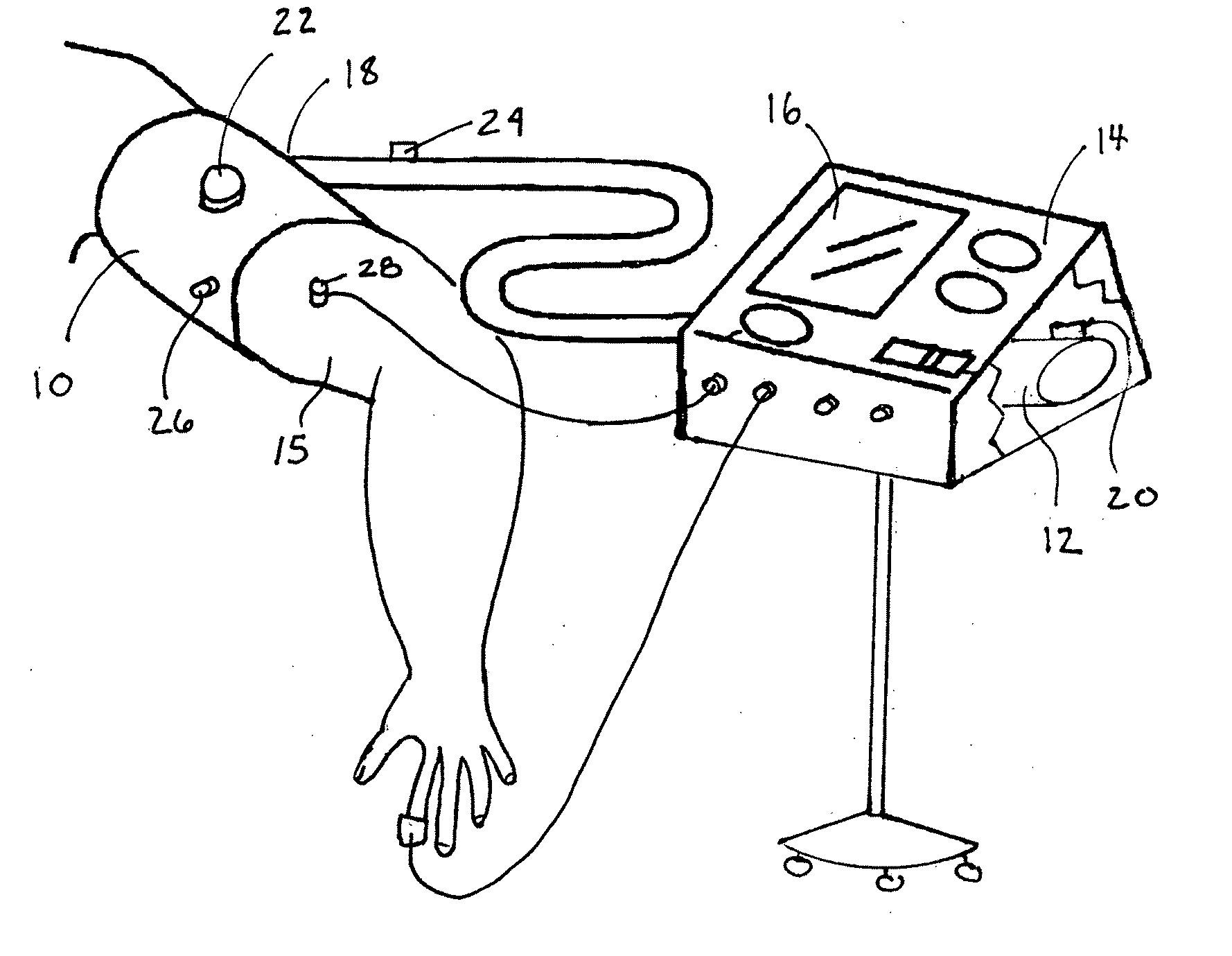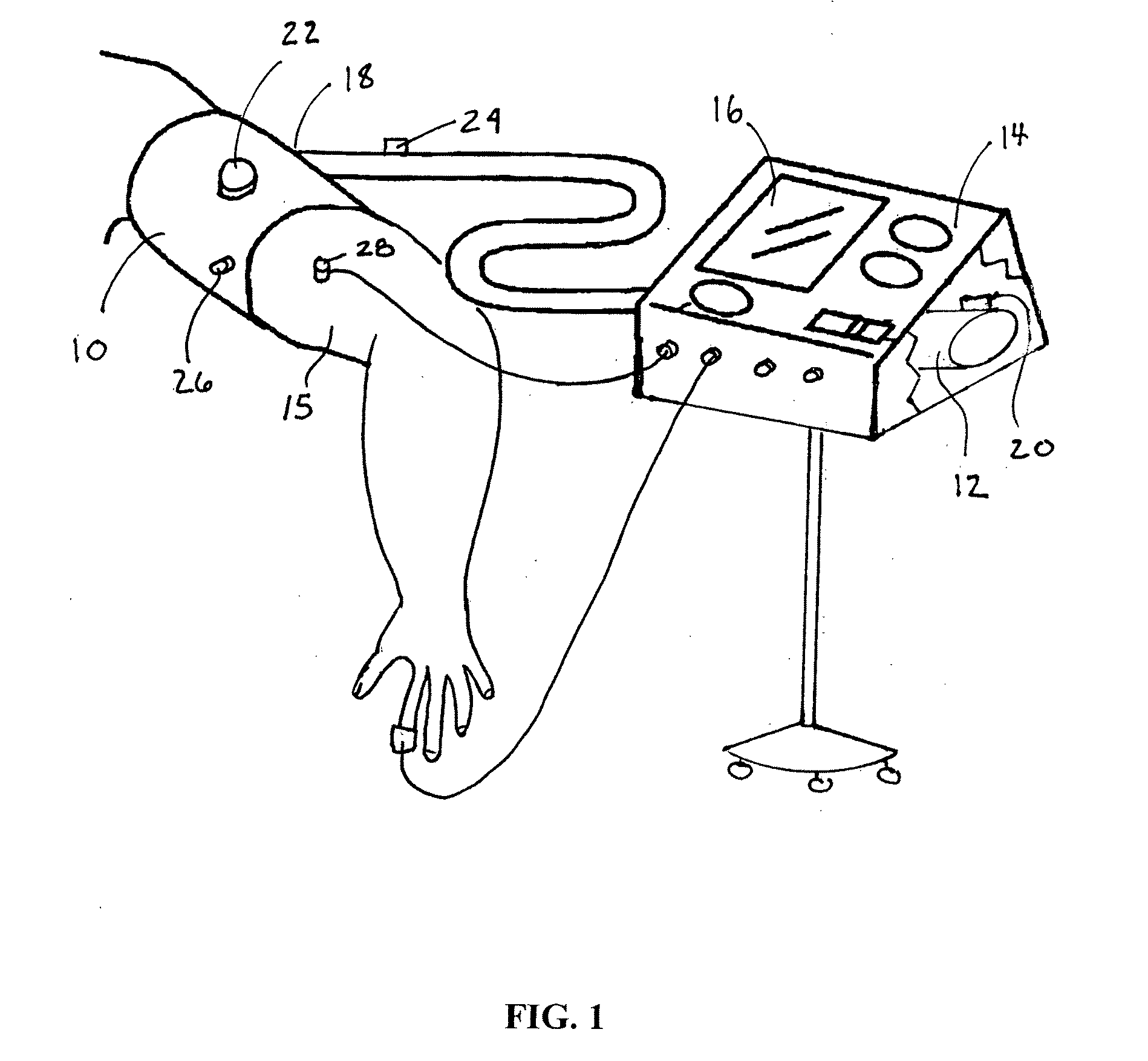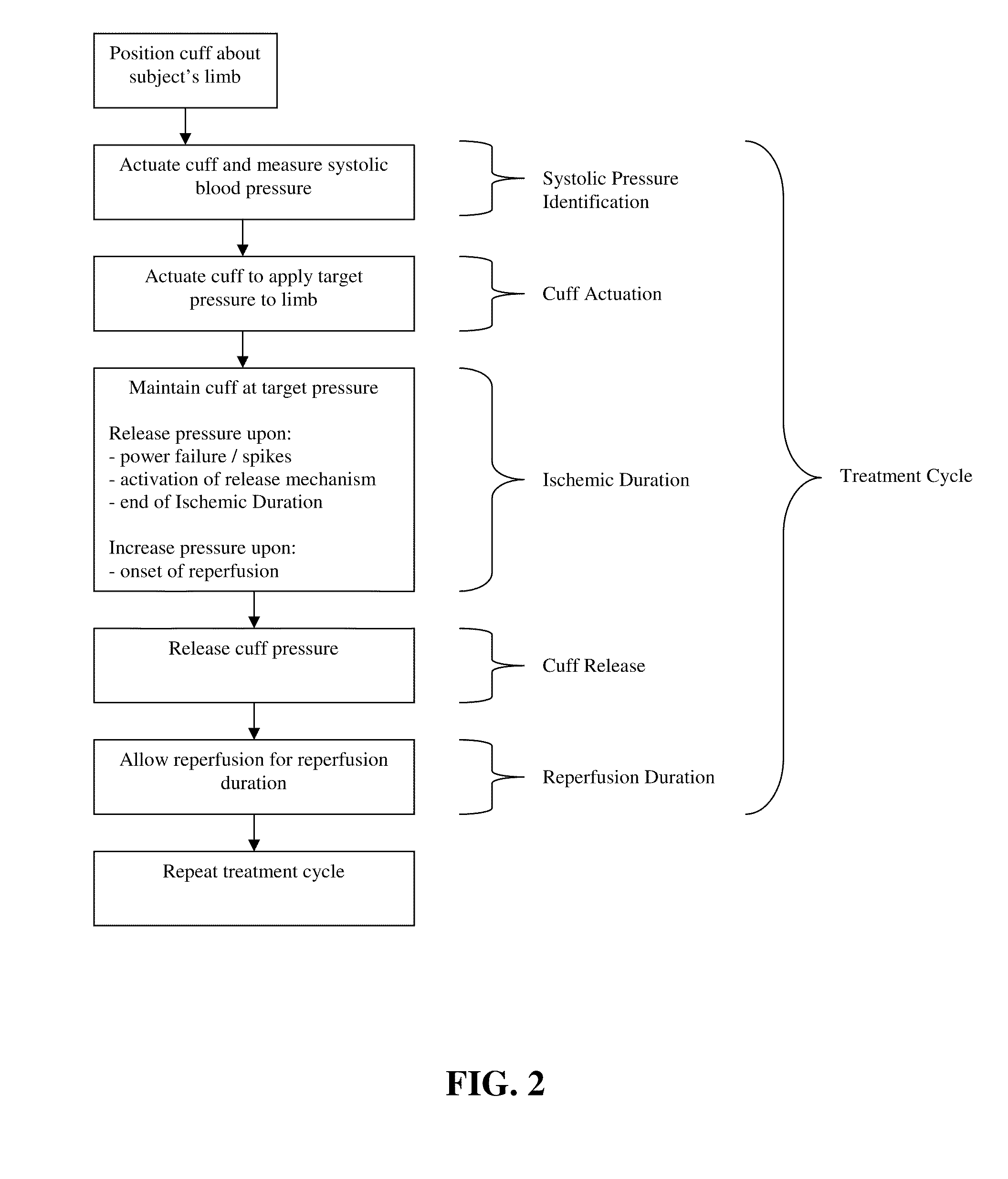Performance enhancement
a performance enhancement and performance technology, applied in the field of performance enhancement, can solve the problems of inability of the heart and circulation to provide enough oxygen, fatigue, and inability to exercise in health and disease, and achieve the effect of improving the performance of physical activity
- Summary
- Abstract
- Description
- Claims
- Application Information
AI Technical Summary
Benefits of technology
Problems solved by technology
Method used
Image
Examples
example 1
Exercise Performance in Competitive Athletes
[0144]Exercise performance in elite athletes, and swimmers in particular, is thought to be limited by skeletal, cardiac and respiratory muscle fatigue. Here, we show that deliberate induction of repetitive cycles of ischemia and reperfusion can enhance the performance of such elite athletes.
Summary
[0145]11 national level swimmers, 13 to 18 years of age, were randomised to real or sham preconditioning. The preconditioning protocol consisted of 4 cycles of upper limb ischemia (5 minutes—standard blood pressure cuff inflated to supra-systolic pressure) and reperfusion (5 minutes). Sham preconditioning intervention consisted of the same protocol, but with the cuff inflated to a pressure of 10 mmHg. Every subject crossed-over the following week. In study 1, subjects performed two standardised submaximal incremental swimming performance tests with measurement of swimming velocity, blood lactate, and heart rate between each increment. Study 2 (n=...
example 2
Updated Study on Competitive Athletes
Summary
[0163]National level swimmers, 13 to 27 years of age, were randomized to RIPC (4 cycles of 5 minutes arm ischemia / 5 minutes reperfusion) or sham, with crossover. In study 1, subjects (n=16) performed two incremental submaximal swimming tests with measurement of swimming velocity, blood lactate, and heart rate. For study 2, subjects (n=18) performed two maximal competitive swims. To examine possible mechanisms, blood samples taken before and after RIPC were dialysed and used to perfuse mouse hearts (n=10) in a Langendorff preparation. Infarct sizes were compared to dialysate obtained from non athletic controls pre and post RIPC. RIPC released a protective factor into the blood stream that reduced infarct size in mice (p<0.05 for control subjects and swimmers). There was no effect of RIPC on submaximal exercise performance. However, RIPC was associated with a mean improvement of maximal swim time for 100 meters of 0.7 second (p=0.04), an imp...
example 3
Exercise Tolerance in Subjects Having Chronic Stable Angina
Background
[0176]Remote ischemic preconditioning (RIPC), induced by transient ischemia and reperfusion (IR) of the limb, has been shown to protect against IR injury following prolonged ischemia in the heart, kidney and brain. Recently RIPC performed prior to elective PCI was shown to decrease ischemic pain, troponin release ST-segment change, and subsequent adverse cardiovascular outcomes at 6 months (Circulation 2009; 119(6):820-7). In this study we examined the effect of RIPC on exercise tolerance in patients with chronic stable ischemic heart disease.
Methods
[0177]Sixty patients were treated for 5 consecutive days with RIPC consisting of four 5-minute cycles of upper limb ischemia (using a blood pressure cuff inflated to 15 mmHg suprasystolic pressure) interspaced with 5 minutes of reperfusion. Ischemic tolerance before and immediately after the final RIPC was evaluated using treadmill exercise testing. Measurements for Hs-...
PUM
 Login to View More
Login to View More Abstract
Description
Claims
Application Information
 Login to View More
Login to View More - R&D
- Intellectual Property
- Life Sciences
- Materials
- Tech Scout
- Unparalleled Data Quality
- Higher Quality Content
- 60% Fewer Hallucinations
Browse by: Latest US Patents, China's latest patents, Technical Efficacy Thesaurus, Application Domain, Technology Topic, Popular Technical Reports.
© 2025 PatSnap. All rights reserved.Legal|Privacy policy|Modern Slavery Act Transparency Statement|Sitemap|About US| Contact US: help@patsnap.com



